2 Definitions and books
2.1 Definitions
Definitions, terms, acronyms

The beginning of wisdom is the definition of terms. Socrates
5 M: Mothe nature, Material, Method, Manpower, Machine (Fishbone or Ishikawa diagram)
5 S: from Japanese Seiri = sort, Seiton = set in order, Seiso = shine, Seiketsu = standardize and Shitsuke = sustain)
5 W: five times Why?
Conformity: fulfillment of a specified requirement
Customer satisfaction: tthe top priority objective of every management system
Customer: the one who receives a product
Dysfunction: deviation in the ability of a functional unit to perform a specified function
Effectiveness: capacity to perform planned activities with minimum effort
Efficiency: financial relationship between achieved results and resources used
Gemba: from Japanese, real place, in the field
Indicator: value of a parameter, associated with an objective, allowing the objective measure of its effectiveness
Interested party: person, group or organization affected by the impacts from a company
ISO: International Organization for Standardization
Kaizen: from Japanese, kai = change and zen = good (for the better, better), Kaizen = continual improvement
Management system: set of processes allowing objectives to be achieved
Muda: from Japanese, waste
Mura: from Japanese, irregularity
Muri: from Japanese, difficulty
Nonconformity: non-fulfillment of a specified requirement
Organization: a structure that satisfies a need
Poka-Yoké: system allowing the prevention of errors by eliminating the human factor (fail safe device)
Problem: gap that must be reduced to obtain a result
Process: activities that transform input into output
Product (or service): any result of a process or activity
QCD: Quality, Cost, Delay
Quality management: activities allowing the control of an organization with regard to quality
Quality: ability to meet requirements
Requirement: implicit or explicit need or expectation
Safety: absence of unacceptable risk
SMED: Single Minute Exchange of Die
SPC: Statistical Process Control
Supplier: the one who procures a product
Top management: group or persons in charge of the organizational control at the highest level
TQC: Total Quality Control
Waste: anything that adds cost but no value
WWWWHHW: Who, What, Where, When, How, How much, Why
In the terminology of quality management systems, do not confuse:
- anomaly, defect, dysfunction, failure, nonconformity, reject and waste:
- an anomaly is a deviation from what is expected
- a defect is the non-fulfillment of a requirement related to an intended use
- a dysfunction is a degraded function that can lead to a failure
- a failure is when a function has become unfit
- nonconformity is the non-fulfillment of a requirement in production
- a reject is a nonconforming product that will be destroyed
- waste is when there are added costs but no value
- control and optimize
- to control is to meet the objectives
- to optimize is to search for the best possible results
- customer, external provider and subcontractor
- a customer receives a product
- an external provider provides a service or a product
- a subcontractor provides a product or service on which specific work is done
- effectiveness and efficiency
- effectiveness is the level of achievement of planned results
- efficiency is the ratio between results and resources
- objective and indicator
- an objective is a sought after commitment
- an indicator is the information on the difference between the pre-set objective and the achieved result
- process, procedure, product, activity and task
- a process is how we satisfy the customer using people to achieve the objectives
- a procedure is the description of how we should conform to the rules
- a product is the result of a process
- an activity is a set of tasks
- a task is a sequence of simple operations
Remark: the customer can also be the user, the beneficiary, the trigger, the ordering party, the consumer.
For other definitions, comments, explanations and interpretations that you don’t find in this module and in annex 06, you can consult: 
.jpg)
- ISO Online Browsing platform (OBP)
- IEC Electropedia
2.2 Books
Books related to Kaizen
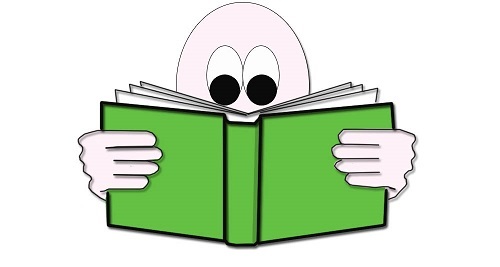
When I think of all the books still left for me to read, I am certain of further happiness. Jules Renard
.jpg) Books for further reading on Kaizen approach:
Books for further reading on Kaizen approach:
 Walter Shewhart, Economic Control of Quality of Manufactured Products, ASQC, 1931
Walter Shewhart, Economic Control of Quality of Manufactured Products, ASQC, 1931 Walter Shewhart, Statistical Method from the Viewpoint of Quality Control, Dover, 1939
Walter Shewhart, Statistical Method from the Viewpoint of Quality Control, Dover, 1939 Kaoru Ishikawa, Guide to quality control, APO, 1971
Kaoru Ishikawa, Guide to quality control, APO, 1971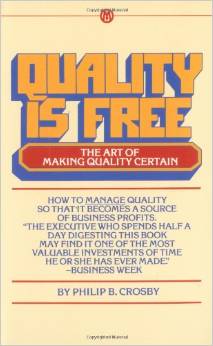 Philip B. Crosby, Quality is free, Mentor, 1979
Philip B. Crosby, Quality is free, Mentor, 1979 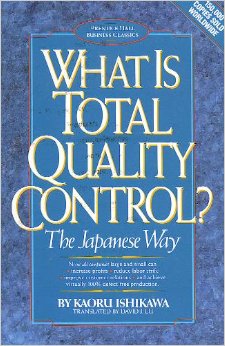 Kaoru Ishikawa, What Is Total Quality Control?, The Japanese Way, Prentice Hall, 1981
Kaoru Ishikawa, What Is Total Quality Control?, The Japanese Way, Prentice Hall, 1981 Edwards Deming, Out of the crisis, MIT Press, 1982
Edwards Deming, Out of the crisis, MIT Press, 1982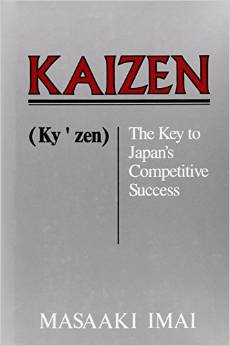 Masaaki Imai, KAIZEN, The key to Japan's competitive success, McGraw Hill, 1986
Masaaki Imai, KAIZEN, The key to Japan's competitive success, McGraw Hill, 1986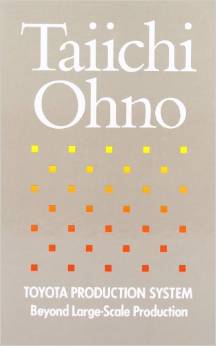 Taiichi Ohno, Toyota Production System: Beyond Large-Scale Production, 1988, Productivity Press
Taiichi Ohno, Toyota Production System: Beyond Large-Scale Production, 1988, Productivity Press Edwards Deming, The New Economics, MIT Press, 1993
Edwards Deming, The New Economics, MIT Press, 1993.jpg) Masaaki Imai, GEMBA KAIZEN, A Commonsense Low-Cost Approach to management, McGraw Hill, 1997
Masaaki Imai, GEMBA KAIZEN, A Commonsense Low-Cost Approach to management, McGraw Hill, 1997 Robert Maurer, One Small Step Can Change Your Life: The Kaizen Way, Algonquin Books, 2014
Robert Maurer, One Small Step Can Change Your Life: The Kaizen Way, Algonquin Books, 2014 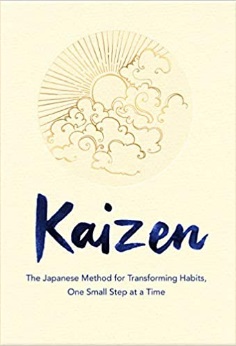 Sarah Harvey, Kaizen: The Japanese Method for Transforming Habits, One Small Step at a Time, Bluebird, 2019
Sarah Harvey, Kaizen: The Japanese Method for Transforming Habits, One Small Step at a Time, Bluebird, 2019
Do not forget the ISOinternational organization for standardization standards dealing with quality management systemsset of processes allowing the achievement of the quality objectives (see also ISO 9000, 3.2.3) in which we find a lot of Kaizen ideas (cf. annex 02). 
